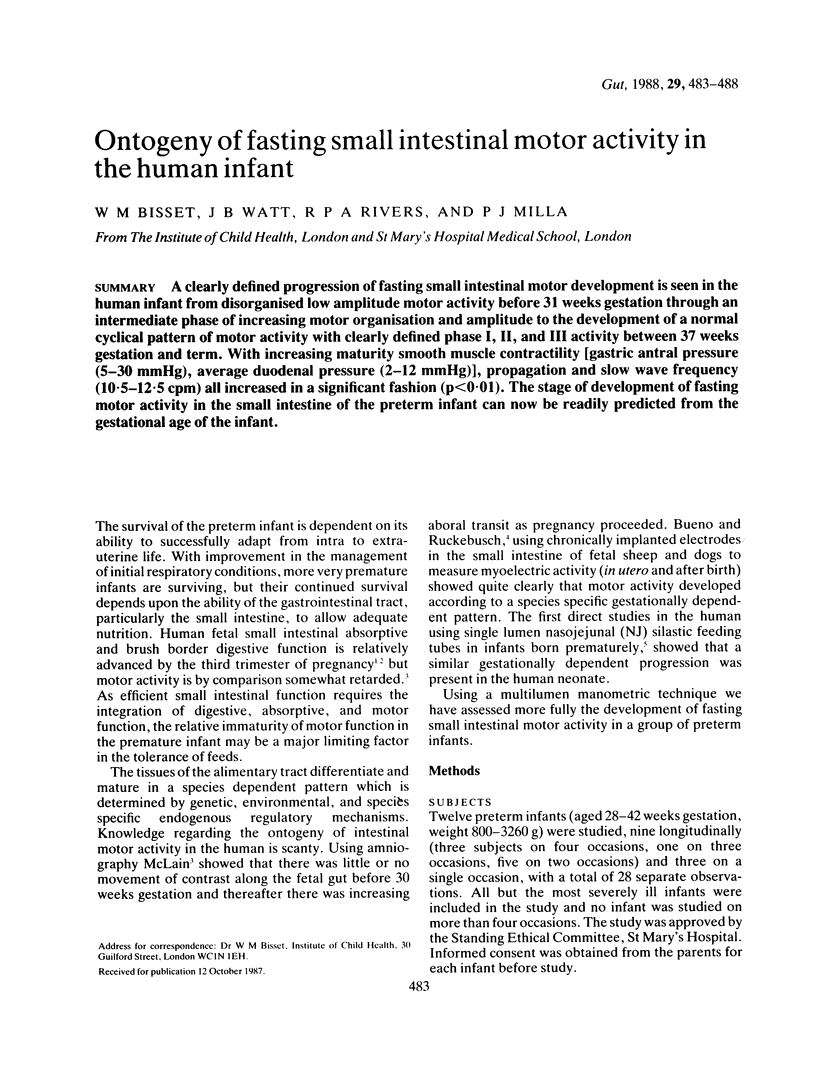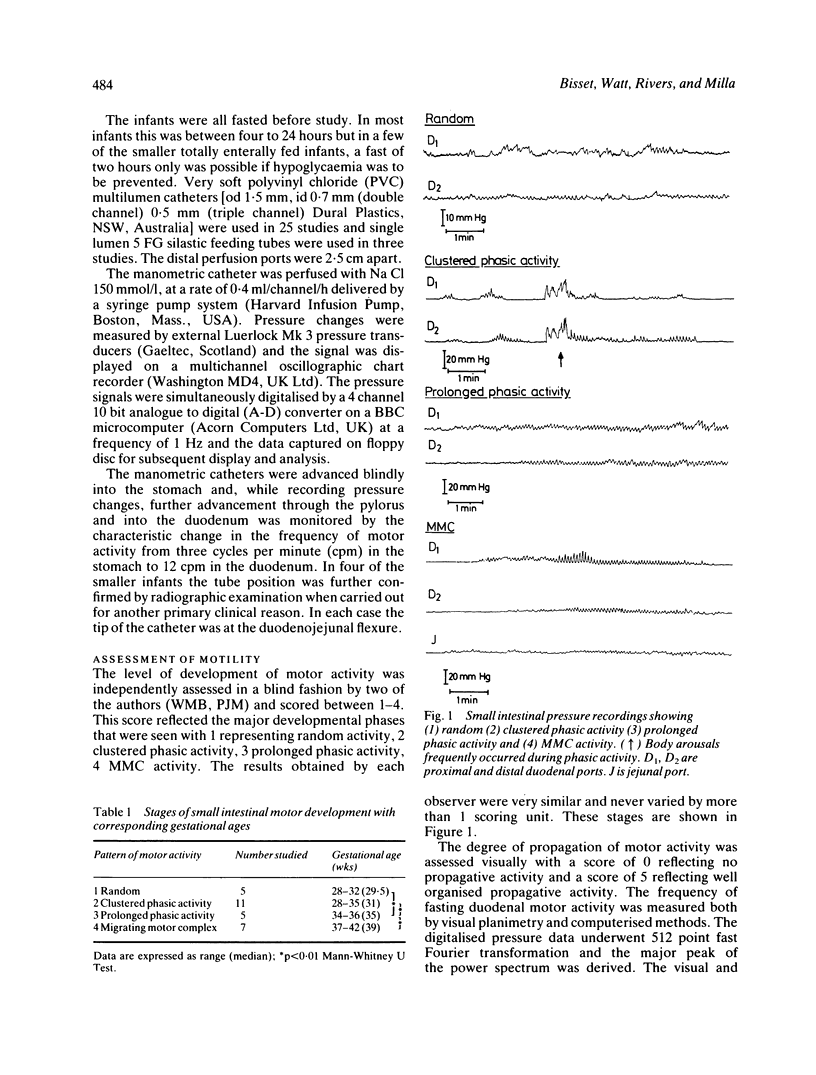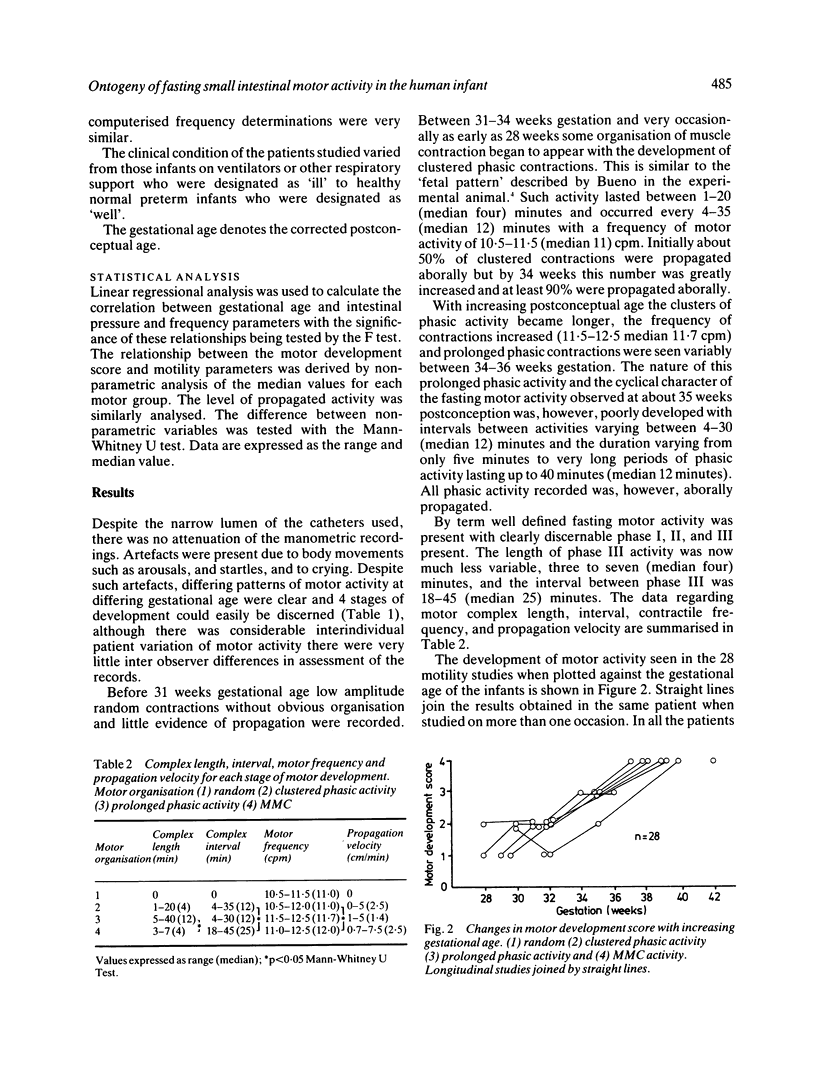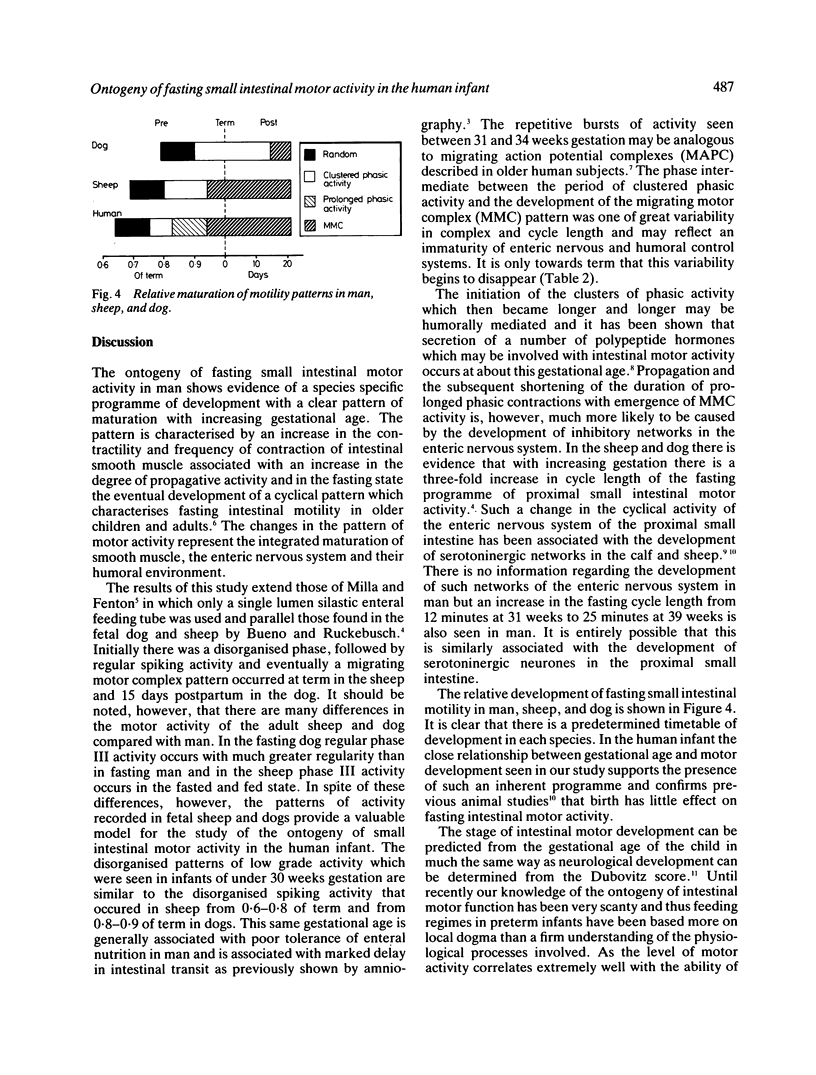Abstract
A clearly defined progression of fasting small intestinal motor development is seen in the human infant from disorganised low amplitude motor activity before 31 weeks gestation through an intermediate phase of increasing motor organisation and amplitude to the development of a normal cyclical pattern of motor activity with clearly defined phase I, II, and III activity between 37 weeks gestation and term. With increasing maturity smooth muscle contractility [gastric antral pressure (5-30 mmHg), average duodenal pressure (2-12 mmHg)], propagation and slow wave frequency (10.5-12.5 cpm) all increased in a significant fashion (p less than 0.01). The stage of development of fasting motor activity in the small intestine of the preterm infant can now be readily predicted from the gestational age of the infant.
Full text
PDF





Selected References
These references are in PubMed. This may not be the complete list of references from this article.
- Branchek T., Kates M., Gershon M. D. Enteric receptors for 5-hydroxytryptamine. Brain Res. 1984 Dec 17;324(1):107–118. doi: 10.1016/0006-8993(84)90627-9. [DOI] [PubMed] [Google Scholar]
- Bueno L., Ruckebusch Y. Perinatal development of intestinal myoelectrical activity in dogs and sheep. Am J Physiol. 1979 Jul;237(1):E61–E67. doi: 10.1152/ajpendo.1979.237.1.E61. [DOI] [PubMed] [Google Scholar]
- Dubowitz L. M., Dubowitz V., Goldberg C. Clinical assessment of gestational age in the newborn infant. J Pediatr. 1970 Jul;77(1):1–10. doi: 10.1016/s0022-3476(70)80038-5. [DOI] [PubMed] [Google Scholar]
- Grand R. J., Watkins J. B., Torti F. M. Development of the human gastrointestinal tract. A review. Gastroenterology. 1976 May;70(5 PT1):790–810. [PubMed] [Google Scholar]
- MCLAIN C. R., Jr AMNIOGRAPHY STUDIES OF THE GASTROINTESTINAL MOTILITY OF THE HUMAN FETUS. Am J Obstet Gynecol. 1963 Aug 15;86:1079–1087. doi: 10.1016/s0002-9378(16)35300-5. [DOI] [PubMed] [Google Scholar]
- Milla P. J., Fenton T. R. Small intestinal motility patterns in the perinatal period. J Pediatr Gastroenterol Nutr. 1983;2 (Suppl 1):S141–S144. doi: 10.1097/00005176-198300201-00020. [DOI] [PubMed] [Google Scholar]
- Ruckebusch Y. Development of digestive motor patterns during perinatal life: mechanism and significance. J Pediatr Gastroenterol Nutr. 1986 Jul-Aug;5(4):523–536. doi: 10.1097/00005176-198607000-00004. [DOI] [PubMed] [Google Scholar]
- Summers R. W., Anuras S., Green J. Jejunal manometry patterns in health, partial intestinal obstruction, and pseudoobstruction. Gastroenterology. 1983 Dec;85(6):1290–1300. [PubMed] [Google Scholar]
- Vantrappen G., Janssens J., Hellemans J., Ghoos Y. The interdigestive motor complex of normal subjects and patients with bacterial overgrowth of the small intestine. J Clin Invest. 1977 Jun;59(6):1158–1166. doi: 10.1172/JCI108740. [DOI] [PMC free article] [PubMed] [Google Scholar]


